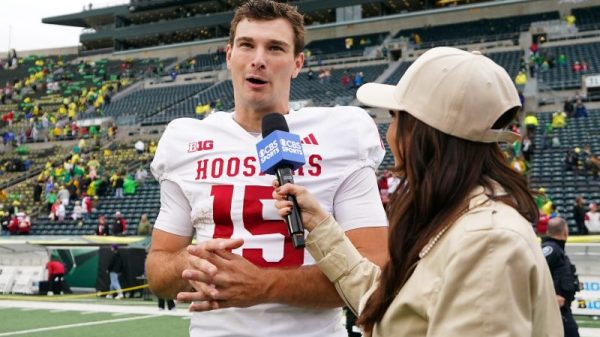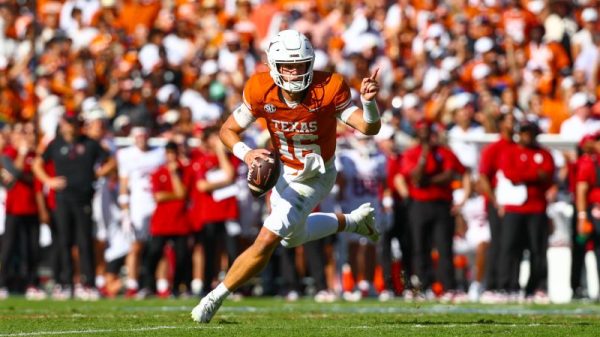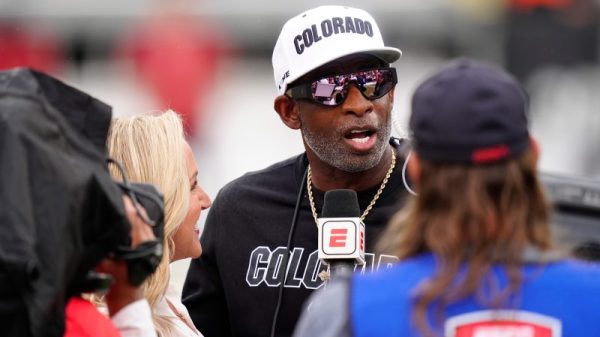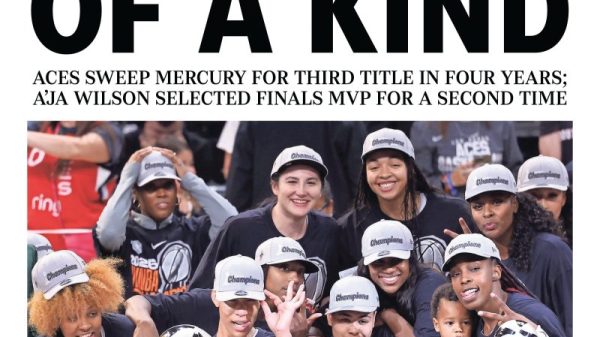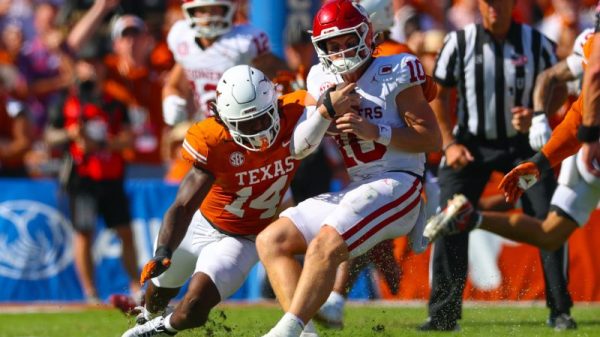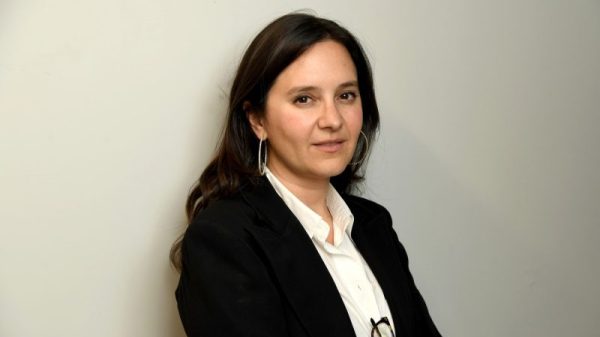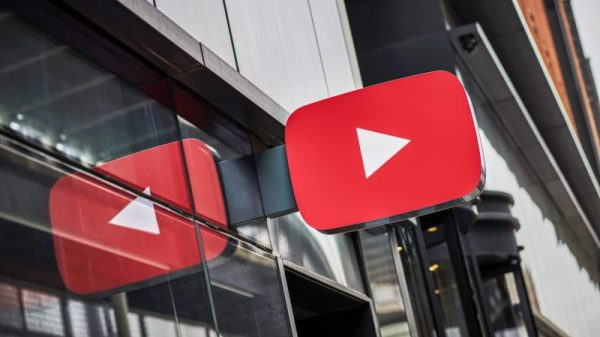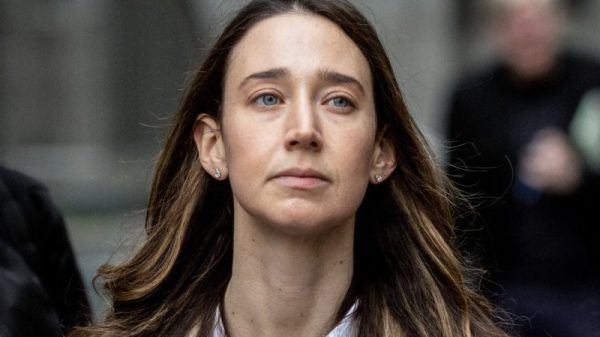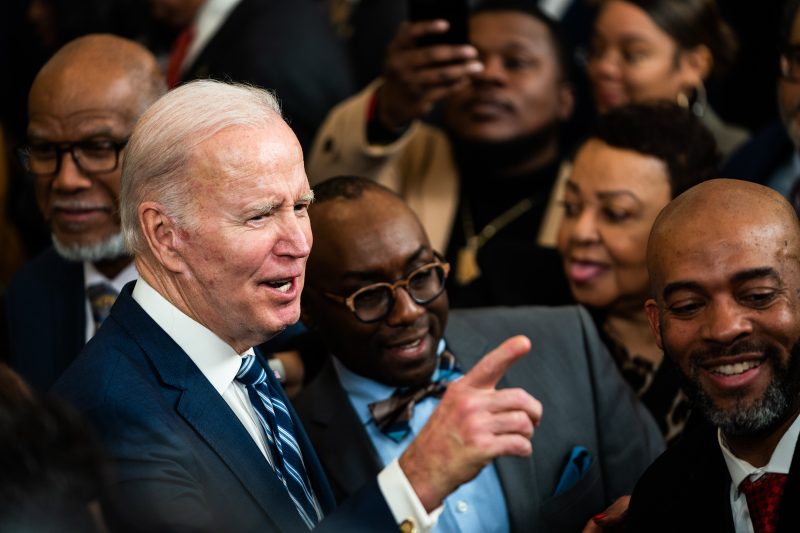Solicitor General Elizabeth B. Prelogar did not mention race in Tuesday’s appearance at the Supreme Court, but her impassioned defense of President Biden’s student loan relief program had a second, unmistakable purpose: It marked a last-ditch bid to protect one of the last remaining pillars of President Biden’s effort to shrink the racial wealth gap.
The $400 billion program, which was consciously tailored to address the reality that Black Americans shoulder a disproportionate share of the nation’s student debt, faced a frosty reception from several justices, who questioned whether Biden has the authority to enact such sweeping changes without Congress.
While the outcome will affect millions of Americans, it will be especially central to the fate of Biden’s racial equity push, an effort marked so far by modest successes and major setbacks. From free community college to universal prekindergarten to a child tax credit to aid for students at historically Black colleges and universities, key building blocks of Biden’s broad effort to shrink the age-old financial gap between Black and White Americans have fallen by the wayside.
If the justices’ skeptical questioning is reflected in their final decision, student loan forgiveness could be next.
Biden promised Black voters he would be a different kind of president, one who did not just pay rhetorical tribute to equality but one who took concrete action to improve African Americans’ position in society. And as he prepares a reelection campaign focused largely on rebuilding the economy, many of those voters, while blaming Republicans for blocking equity initiatives, also ask if Biden could have done more.
“Right now, I would give him a B for effort and a C for execution,” said Rodney Brooks, author of “Fixing the Racial Wealth Gap.” “And the execution part is that he’s not able to get it done, because there is so much opposition to any of these programs that would lessen or improve the racial wealth gap.”
Biden’s supporters say that he has in fact offered an impressive array of proposals for closing the wealth gap but that they had difficulty surviving GOP opposition in a narrowly divided Congress.
Congress did pass an expanded child tax credit of up to $3,600, which helped lower child poverty and reduce racial gaps among young families, but lawmakers allowed it to expire in December 2021. Other major bills Biden has signed into law, such as his $1.2 trillion infrastructure package and a measure to reduce drug costs and protect the environment, include provisions aimed at addressing racial inequity, though they are less ambitious than the proposals that have collapsed.
With Republicans now in control of the House, Democrats and civil rights activists have little hope that the remaining pieces of Biden’s racial justice program will be politically feasible for the rest of his term. That would force the president to ask voters to give him another four years to deliver on those priorities.
Against that backdrop, the student loan relief program stood out as one initiative that could have an immediate impact on racial disparities. More than 25 million people applied for the program after Biden announced the program last year, and the White House emphasizes that the forgiveness of up to $20,000 in student loans would target borrowers with the highest economic need, helping “narrow the racial wealth gap.”
But amid legal challenges, including from Republican state attorneys general, federal judges halted the program last year before any of the debt could be discharged. The Supreme Court will ultimately decide the program’s fate.
Biden himself had been initially skeptical of the push to have the federal government cancel hundreds of billions of dollars in student debt, even as the idea grew in popularity during the 2020 Democratic presidential primary. But after he took office, Black leaders redoubled their efforts to convince him to support broad student debt cancellation, framing the issue as one of racial justice. The lobbying intensified as other priorities, including voting rights legislation and policing reform, stalled in Congress.
Black students take out loans more often, borrow more money and are more likely to fall behind on payments, research shows. Judith Scott-Clayton, a professor at Columbia University, found that before the pandemic, nearly half of Black borrowers experienced defaults within 12 years of starting college.
A yawning wealth gap and the high cost of college have fueled their reliance on loans, while labor discrimination and income inequality made the debt difficult to repay, said Jalil Mustaffa Bishop, an assistant professor of education at Villanova University.
“With Black borrowers, it’s not just that they’re in debt, it’s that student debt pushes them into a negative wealth hole,” Bishop said. “It takes widespread transformative policies to get them out, really just to get them to zero, to even start building wealth.”
Biden’s plan was structured to tackle some of those problems, offering $10,000 in relief to most borrowers and $20,000 for people who had received Pell Grants, which go to students with limited financial resources. Nearly 71 percent of Black undergraduate borrowers are Pell Grant recipients, twice the share of White borrowers, so the program was set to reach a large number of Black Americans, according to the White House.
With Republicans strongly opposed to broad debt forgiveness and even some Democrats skeptical, it was clear Congress was unlikely to approve such a move. So Biden took unilateral executive action, a move that was sharply criticized by conservatives but celebrated by many Black leaders.
Lodriguez Murray, senior vice president for public policy and government affairs at the United Negro College Fund, called the additional relief for Pell recipients one of the greatest political efforts to uplift “Black people who are doing everything in their power to change their economic situations.”
Critics of Biden’s plan say it rewards people who took out loans they could not afford while punishing those who acted prudently and perhaps gave up their hopes of college so they would not have to go into debt. The Supreme Court justices, for their part, focused on whether the president has the unilateral authority, absent congressional approval, to make such a major decision on the government’s finances.
While the rejection of the program would be a blow to Biden’s agenda, White House aides note that he has made progress with other equity initiatives, albeit less sweeping ones.
During his first two years in office, Biden pushed to set aside pandemic assistance funding for underserved communities, lower the cost of housing and health care for low-income Americans, and increase funding for historically Black colleges. And even as he increasingly focuses on what he dubs a “blue-collar blueprint for America,” aides say he is not abandoning his commitment to racial justice.
Biden recently signed an executive order directing agencies to redouble their efforts to tackle inequality, and supporters point out that he has brought unprecedented diversity to his executive appointments and judicial nominations.
And in the aftermath of a pandemic that hit Black Americans particularly hard, their financial fortunes are broadly improving, Biden noted at a Black History Month reception on Monday. “Black unemployment is near record lows,” he said. “Wages for Black workers are up.”
Still, the typical White family owns about 10 times the wealth of the typical Black family, a gap that has endured for decades. College education has long been a path into the middle class in the United States, but a lack of family wealth often forces Black students to borrow funds for schooling. The burden of those loans often prevents those students from advancing economically once they graduate, said Denise Smith, a senior fellow at the Century Foundation, a liberal think tank.
“This is an opportunity for us to think more about the legacy of slavery and segregation, and how it has played a role in Black people being able to access higher education,” said Smith, who has studied how disparities in education are linked to social inequality. “All these things are compounding.”
Opponents of Biden’s debt relief program say it takes the wrong approach to these problems. “I would much prefer, if there’s a specific policy goal of reducing racial wealth inequality, that the funds are explicitly for that rather than dilute it by having to give resources to White students as well, to be blunt,” said Beth Akers, a senior fellow at the conservative American Enterprise Institute.
But some who could benefit from Biden’s debt forgiveness plan say it would tangibly affect their family’s wealth.
Desiree Veney, a senior studying psychology at Morgan State University, has already applied for relief and encouraged her parents and friends to do the same. Neither of her parents completed their college degrees, but they are still repaying their student loans — and now must worry about getting Veney’s eight younger siblings through school.
With an eye on graduate school, Veney knows her current $23,000 in student loans probably will grow. “I don’t want a never-ending cycle of generational debt,” she said. “I want the financial security, the economic mobility … all the things that [higher] education is supposed give us.”
Ernest Holmes, who graduated from Morehouse College in 2019, said he knows firsthand that debt forgiveness can be critical for advancing economic mobility. His $10,000 in student loans was paid off by a surprise gift from billionaire investor Robert F. Smith, who told the graduating class during his commencement speech that he would be covering all of their debt.
Holmes used the money he would have spent paying off debt to help him purchase real estate, becoming a homeowner in his early 20s. He has since bought a second property in Atlanta, he said.
“Things like that wouldn’t be possible if I had to worry about debt and student loans at the same time,” said Holmes, president of CodeHouse, a nonprofit that helps minorities enter the high-paying tech industry.
Bryce Berry, who will graduate from Morehouse this spring with about $16,000 in student loans, had been looking at teaching jobs, but he has begun considering more lucrative fields such as consulting in part to reduce his debt burden.
“I have to keep my options open,” Berry said, citing the rising cost of living and broader economic uncertainties. “This Supreme Court decision, amongst other things, is weighing on me — like, how am I going to survive after I graduate?”






